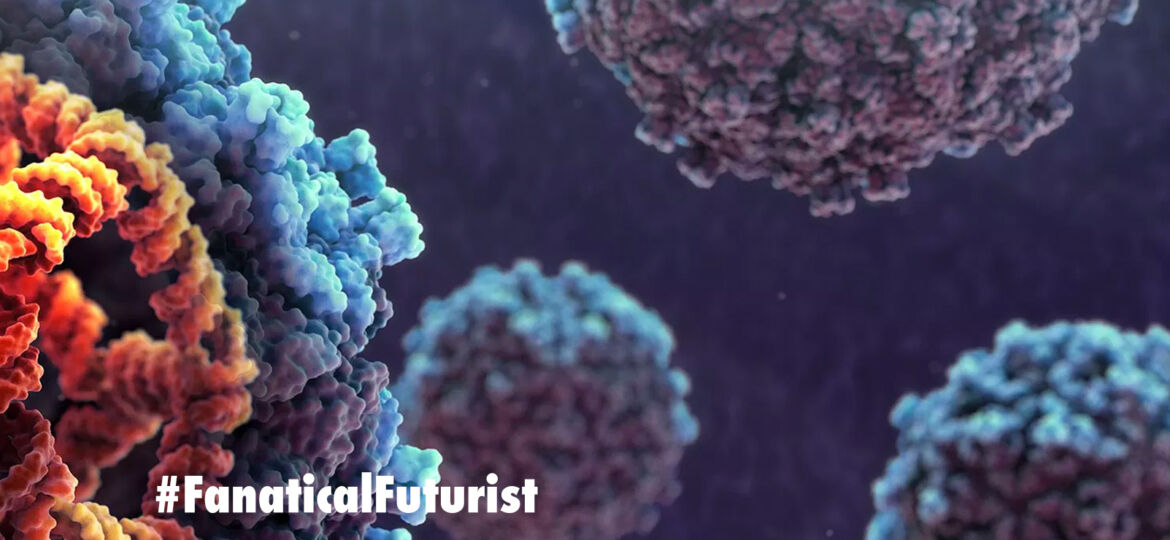
WHY THIS MATTERS IN BRIEF
In the future we will increasingly rely on tiny machines to help monitor our health, and diagnose and cure disease, and being able to control and direct them will be crucial.
It’s probably high time for you to forget your outdated belief that tomorrow’s nanomachines and and nanobots will simply be scaled down versions of some life sized technology, like the submarine in the 1960s movie the Fantastic Voyage because in reality they’re going to be much cooler and way more alien, like these biohybrid robots, enzyme powered nano-rocket ships, and a corkscrew shaped nanomotor that was described in the journal Advanced Materials. Using small, rotating magnetic fields, researchers steered their itsy bitsy machines inside, yes, that’s right, get your head around that, living cells to trace out the letters “N” and “M,” which correspond to the word NanoMotor in the cells cytoplasm. In fact the field is starting to advance so quickly that recently our good friends at Caltech created a smart pill that could keep track of all these nanobots as they roam about your body, a Nanobot GPS if you will…
“We not only showed they can [move] inside a cell, we engineered a strategy to move around ones in controlled way and all without hurting the cells,” said the paper’s co-author Malay Pal, of the Indian Institute of Science in Bangalore.
Watch the Nanomachine trace the letter “M” in Cytoplasm
Other popular forms of nanomotors that the team created include nanorods propelled by acoustic-electrical means, that’s ultrasound and electricity in laymans terms. Like their newer cousins these tiny spinning sticks can also churn up the inside of a cell, but the team found it hard to control their direction. Ultrasound propelled nanorods are also limited because when ultrasound is applied the cells they’re moving around in begin to float and once they’re stuck to a surface that makes it impossible to experiment, said Pal. Ultrasound may also induce stress in living tissue, causing unintentional damage.
Taking another tack, Pal’s Ph.D. advisor, Ambarish Ghosh, a researcher at the Center for Nano Science and Engineering, began to experiment with helical nanostructures controlled by magnetic fields, which don’t lift or stress cells. Ghosh, Pal, and their collaborators fabricated these nanomotors out of silica, then coated them with iron. The team evaluated two sizes of these nanomotors, with diameters of 400 nanometers and 250 nanometers, in three types of living cells. Most cells took up a single nanomotor, while some incorporated several.
The researchers then placed a dish with the cells within a magnetic coil under a microscope. Then, by rotating the magnetic field, they were able to control and track the movement of the nanomotors inside the cells. The smaller, 250 nanometer motors were easier to steer than the larger ones, added Pal.
The work is at an early stage, but “these tiny machines have tremendous potential in applications like targeted drug delivery, nano-sensing, therapeutics, and nano-surgery,” said Pal, with the latter, nano-surgery, being a field of nanotechnology that I’m keenly keeping an eye on for the first signs of nanomachines that can perform in vivo surgeries in humans, but so far I’ve seen very little progress in that space so let me know if you know anyone who knows anything, there’s a genetically modified beer in it for you if you do!
Back in January, the team also showed they could use the helical nanomachines as sensors to measure the viscosity of a fluid, and as nano-tweezers to pick up, transport, and release objects on the nanoscale, so the outlook for the technology looks promising, and who knows, it might even give the latest DNA robots and Molecular Assemblers a run for their money…
















